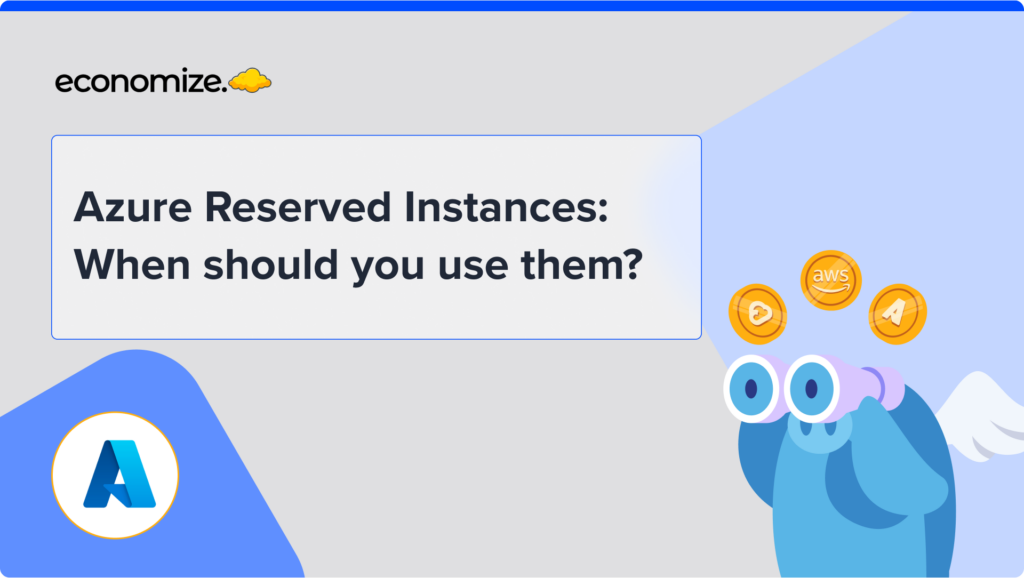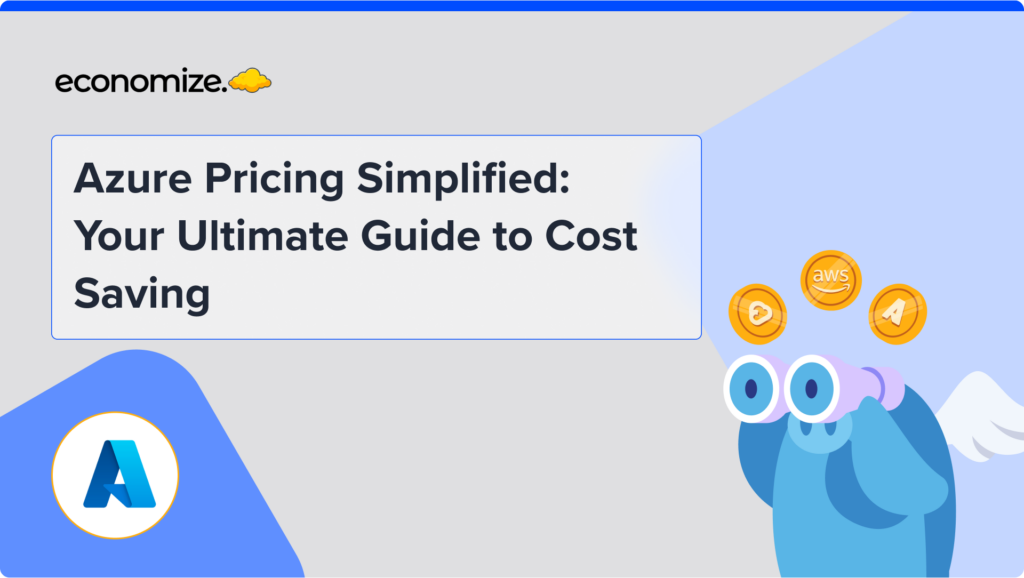What is an Azure VM?
An Azure Virtual Machine is a scalable, on-demand computing resource offered by Microsoft Azure. With Azure VMs you can deploy, manage, and run your workloads in the cloud, without the need to invest in any physical hardware. Azure VMs are used for development, testing, as well as scaling applications in the cloud. They provide you the flexibility to configure your resources based on demand and support multiple operating systems, like Windows, and Linux, to run a whole range of applications and services.
Azure VMs support multiple payment options, including pay-per-second usage, reserved instances, Azure spot VMs, and a free tier for specific VMs. Although Azure VMs offer virtualization benefits, users are responsible for tasks such as software installation, updates, and configuration. This gives the users more control over the resources compared to other Azure services.
Features of Azure Virtual Machines
Azure VMs offer a wide range of features to support your workload.
- Scalability and Flexibility: Azure VMs allow users to scale resources up or down based on application needs, ensuring cost efficiency by paying only for what is used.
- Multiple Operating System Support: Azure VMs support a variety of OS options, including Windows, Linux, and custom images, providing flexibility for diverse workloads.
- Integrated Networking Options: Azure VMs can connect with Azure virtual networks (VNets), enabling integration with on-premise infrastructure and secure network configurations.
- Custom Machine Sizes: Users can select from predefined VM sizes or configure custom sizes to meet the specific resource requirements for CPU, memory, and storage.
- Disaster Recovery and Backup Support: Azure VMs can be part of disaster recovery plans with services like Azure Backup and Site Recovery, ensuring data protection.
- Automation and Management Tools: Azure offers tools like Azure Automation, Azure VM Scale Sets, and Azure Monitor to automate deployments and manage VMs efficiently.
What are Azure VM Types?
Azure Virtual Machines come in various types. Each VM type is designed for specific tasks, such that users can choose the most suitable option based on their needs. From general-purpose VMs for development and testing to high-performance compute (HPC) VMs for resource-intensive simulations, Azure provides specialized types to enhance efficiency and cost-effectiveness.
General Purpose VMs
General Purpose VMs provide a balanced ratio of CPU to memory, making them suitable for a variety of workloads. These types of virtual machines would be great for development, testing, small to medium-sized databases, and web servers with low to moderate traffic. This category encompasses several families, including the A-family (economical entry-level), B-family (burstable), and D-family (designed for enterprise-grade workloads like relational databases and data analytics). The DC-family offers enhanced confidentiality features, making it perfect for secure computing needs.
Compute-Optimized VMs
Compute-optimized VMs are designed with high CPU-to-memory ratios, making them appropriate for medium-traffic web servers, network appliances, batch processing, and application servers. These VMs belong to the F-family, which is customized for standard compute workloads, and the FX-family, which is intended for more demanding tasks such as Electronic Design Automation (EDA) and in-memory analytics.
Memory-Optimized VMs
Memory-optimized VMs have a high memory-to-CPU ratio, making them well-suited for large relational databases, in-memory analytics, and medium to large caches. The families include the E-family (for data-intensive workloads), the Eb-family (which provides enhanced remote storage performance), the EC-family (focused on confidential computing), and the M-family (for workloads that require extremely large memory capacities).
Storage-Optimized VMs
These VMs provide high disk throughput and I/O and are designed to handle data-intensive workloads such as big data processing, SQL and NoSQL databases, data warehousing, and transactional databases. The L-family fits this category, providing excellent performance for storage-heavy tasks like Cassandra, MongoDB, and Redis databases.
GPU-Accelerated VMs
GPU-accelerated VMs are designed specifically for compute- and graphics-intensive tasks, including AI training, rendering, and virtual desktop infrastructure (VDI). The NC-family and ND-family focus on large memory and heavy compute tasks, while the NG-family and NV-family are optimized for virtual desktops, cloud gaming, video encoding, and rendering.
FPGA-Accelerated VMs
FPGA (Field-Programmable Gate Array) optimized VMs are Azure VMs specifically crafted for specialized tasks that require significant computing power, such as machine learning inference, video transcoding, and database search analytics. The NP-family falls into this category, where the workloads take advantage of reconfigurable hardware for maximum performance.
High-Performance Compute (HPC) VMs
HPC VMs are designed for high-performance workloads, like computational fluid dynamics, molecular dynamics, weather simulation, etc. It includes the HB-family, with high memory bandwidth for fluid dynamics and weather modeling. The HC-family is suitable for high compute applications such as finite element analysis and computational chemistry. The HX-family is for large memory capacities for advanced Electronic Design Automation (EDA) applications. These VMs guarantee high efficiency for intricate simulations and scientific workloads.
Microsoft Azure Virtual Machine Pricing
Azure Virtual Machines pricing is based on several factors, primarily the size of the VM and the operating system used. Azure follows a pay-as-you-go model, meaning users are billed hourly for the duration the VM is running. If the VM is used for only part of an hour, Azure charges for the exact minutes used, offering precise cost control. The pricing models include:
Azure Free Tier
Azure provides new users with a free credit trial, offering $200 in Azure credits for the first 30 days. In addition, users can access a range of capped free services for 12 months.
- The free tier allows you to develop services in any supported Azure region.
- You can create multiple VM instances, as long as the total usage stays within the predefined limits.
- The free tier includes 750 hours of B1S, B2pts v2 (ARM-based), and B2ats v2 (AMD-based) burstable VM usage each month for a year, enabling you to test and deploy smaller workloads at no cost.
Pay-As-You-Go
With the Pay-As-You-Go model, you are billed based on the actual time your VM is running, making it a highly flexible option.
- Charges are calculated by the second, ensuring that you only pay for the time the VM is active.
- No upfront payment or long-term commitment is required, allowing you to scale your compute resources as your application demands change.
- This model is ideal for short-term, non-interruptible workloads or applications with unpredictable resource usage.
- However, prices tend to be higher than other pricing models due to its flexibility.
Azure Savings Plan for Compute
Azure Savings Plan is designed to help organizations reduce cloud expenses by committing to a specified usage on select Azure compute services. By committing to consistent usage for one or three years, businesses can enjoy discounts of up to 65% compared to standard pay-as-you-go rates.
e Azure Savings Plan applies to different VMs in various services and regions. Thus you can utilize the diverse compute resources without being locked into specific virtual machines or services.
The Azure Savings Plan is suitable for:
- Companies looking to optimize costs while maintaining flexibility in resource usage.
- Organizations planning for consistent workloads across multiple Azure services.
- Businesses that want to avoid restrictions to specific VM types or regions while benefiting from lower pricing.
Reserved VM Instances (RIs)
Reserved VM Instances provide significant cost savings of up to 72% for customers who can commit to using a virtual machine for one or three years.
- This option is perfect for applications that have consistent and predictable workloads.
- You can lock in a VM instance in a specific region for 1 or 3 years, ensuring capacity availability and reducing costs.
- Reserved Instances offer flexibility: you can exchange or cancel them with a cancellation fee, and use reserved capacity across other Azure VM types in the same region.
- Unlike other cloud providers, Azure allows you to pay for Reserved VMs monthly, without any additional costs.
- Benefits include forecastable pricing, prioritized compute capacity in Azure regions, and instance size flexibility to manage RIs automatically.
Common use cases include:
- Applications with constant or predictable resource demands.
- Organizations that can commit to using Azure VMs for long-term projects.
- Workloads that require dedicated capacity and steady compute needs.
Spot Virtual Machines
Azure Spot VMs provide significant savings of up to 90% compared to PAYG pricing—by utilizing unused Azure capacity. However, they come with the trade-off of lower availability.
- Spot VMs are ideal for workloads that can tolerate interruptions, such as batch processing, development environments, and high-performance computing tasks.
- Azure may evict your Spot VMs at any time if the price exceeds your maximum price or if capacity is needed for other services.
- This makes Spot VMs unsuitable for production workloads but excellent for non-critical applications that can handle sudden termination.
Spot VMs are typically used for:
- Stateless, large-scale applications such as big data analytics or containerized workloads.
- Dev/test environments, including CI/CD workflows.
- Batch processing tasks, visual rendering, and certain analytics jobs.
Conclusion
Azure VMs are versatile compute solutions that handle a variety of workloads. It offers several pricing models to fit different business needs. Whether you’re just starting out with the Free Tier, need the agility of Pay-As-You-Go, the flexibility of Azure Savings Plan, want to lock in savings with Reserved Instances or take advantage of cost-effective Spot VMs, Azure provides options that align with your application requirements.
However, with this flexibility comes the complexity of managing costs effectively. Economize helps you optimize your Azure costs by tracking your spending in real time, monitoring your usage patterns, and recommending the best pricing models based on your workload demands. Not only does it prevent overprovisioning, it can also lower your cost, and guarantee that your cloud resources are in line with your business goals.
FAQs:
Q: What are the types of VMs in Azure?
A: Azure offers several types of Virtual Machines tailored for different workloads, including General Purpose, Compute-Optimized, Memory-Optimized, Storage-Optimized, GPU-Accelerated, and FPGA-Accelerated VMs.
Q: What are the six VM size categories available in Azure?
A: The six VM size categories in Azure are General Purpose, Compute-Optimized, Memory-Optimized, Storage-Optimized, GPU-Accelerated, and High Performance Compute (HPC) VMs.
Q: How are Azure VMs priced?
A: Azure VMs are primarily priced based on their size and the operating system used, with charges incurred hourly for the duration the VM is running.
Q: What are the three pricing models of Azure?
A: The three pricing models for Azure VMs are Pay-As-You-Go, Reserved VM Instances, and Spot Virtual Machines, each offering different levels of flexibility and cost savings.
Q: What type of VM is free in Azure?
A: Azure offers a free tier that includes 750 hours of B2pts v2 (ARM-based), and B2ats v2 (AMD-based) burstable VM each month for the first 12 months, allowing users to test and deploy smaller workloads at no cost.
Looking to Optimize your Cloud Costs?
Ready to transform your cloud economics? Don’t let runaway costs hold your business back. With Economize, you can effortlessly slash your cloud expenditures by up to 30%. Book a free demo with us today and discover how we can help you start saving in as little as 10 minutes.








